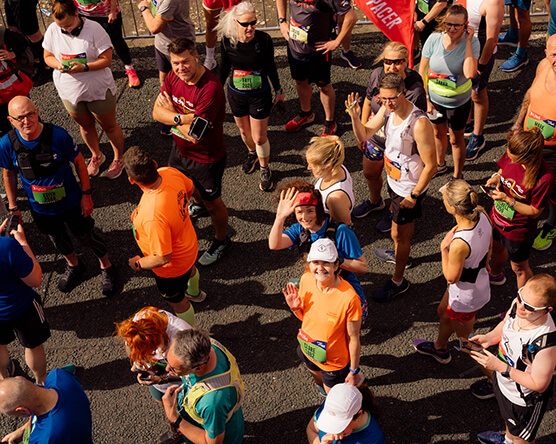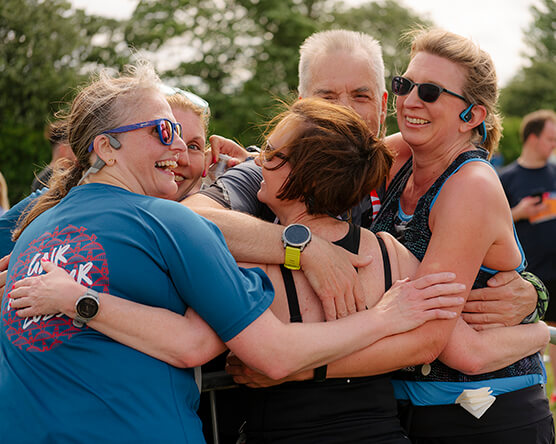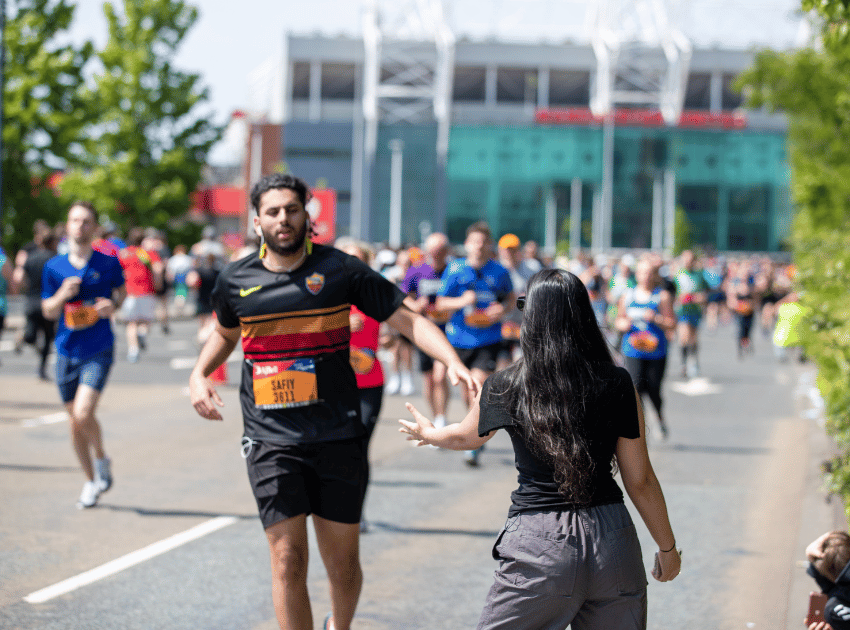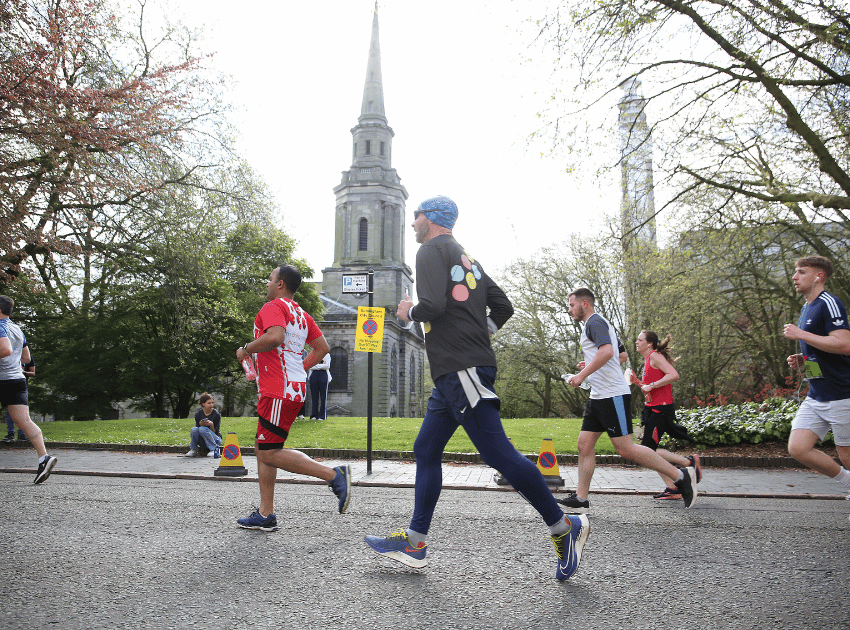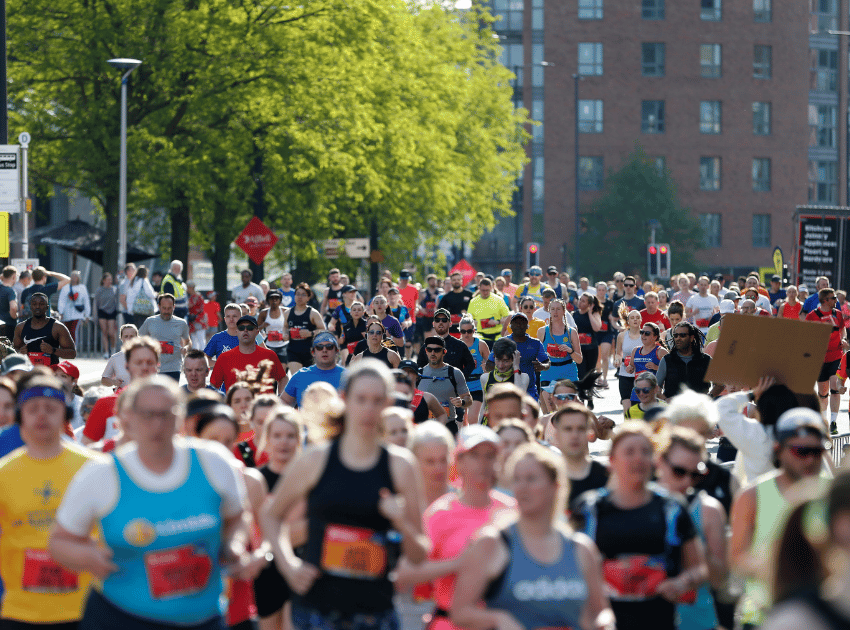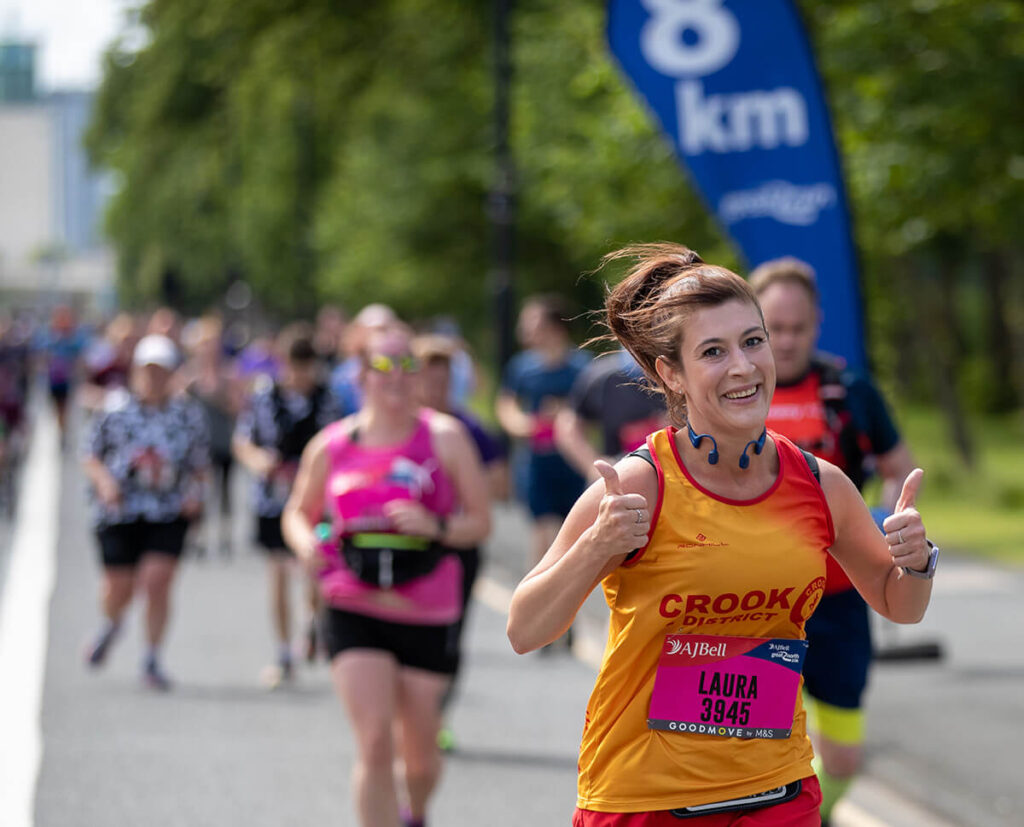From separated diastasis recti (stomach muscles) to changing the size of your feet, carrying a baby for nine months and giving birth can take an intense physical effort – and a toll on your body. Running is a high-impact exercise that puts pressure on the pelvic floor, so a good place to start before returning to running after pregnancy is with low-impact exercise and general strengthening exercises.
That’s why we’ve partnered up with experts Emma from Physio Mum and Suzanne of Know Your Floors to look at one aspect of pregnancy recovery you need to tackle before getting back into running after having a baby: the pelvic floor.
Read on to have all your questions answered – from what your pelvic floor actually is, to how you can get it back to full strength after pregnancy – and dispelling some of the myths, taboos and embarrassment that hold too many women back.
What is your pelvic floor?
Your pelvic floor is a group of muscles located in the pelvis. They stretch from back to front and side, forming a kind of ‘muscle net’ supporting the bowels, bladder and uterus. Everyone has a pelvic floor, male or female. During pregnancy, as a baby grows and develops to full-term, however, the pelvic floor comes under a lot more pressure than normal and the muscles stretch and lengthen.
A weakened pelvic floor can result in a whole range of symptoms related to pelvic floor dysfunction such as leaking, pressure, soreness or, at the more serious end, even prolapse.
Not pleasant – but not unusual and perhaps not surprising when you consider the changes that your body undergoes during pregnancy. If you’re struggling with symptoms, you’re definitely not alone.
The truth about pelvic floor dysfunction:
It can affect you at any time
“Yes, it’s more common in women who’ve had a baby, but pelvic floor dysfunction can affect women of all ages at different points in their lives,” says Emma from Physio Mum. “Girls, young women (particularly athletic women) who haven’t had children, women who have birthed vaginally and who have had c-sections, peri and post-menopausal women – in short any woman can experience pelvic floor issues.”
Needing to go NOW
A whopping 1 in 3 women experience urinary incontinence after having a baby. But just because it’s common doesn’t mean you should put up with it. “The good news is, there’s lots that can be done to strengthen the pelvic floor and get your bladder control back before, during and after pregnancy,” says Emma.
Advice has changed
“Once upon a time, women with pelvic floor issues would be told to avoid high-impact exercise like running and weight lifting,” explains Emma. “Now, the advice has changed, with research suggesting that at the right time during rehabilitation, lifting weights and high impact exercise might be important in helping to improve your pelvic floor symptoms. Always consult with a specialist though.”
You have the power
“For most women, pelvic floor dysfunction is highly treatable, with many women seeing a big change in their symptoms after getting the right help,” says Emma. If in doubt, speak to your GP or a physiotherapist specialising in pelvic health.
Strengthening your pelvic floor
Suzanne, creator of Know Your Floors, has a huge TikTok following built around the message that pelvic floor exercises can be fun and built into your everyday routine. Suzanne does online #squeezealong challenges to pop and dance classics – and, she says, it’s never too late to get started.
“We advise that women of all ages do pelvic floor exercises, increasing the intensity and regularity before, during and after pregnancy,” she explains. “But if you haven’t been doing your pelvic floor exercises, all is not lost.”
“You can definitely improve things post-pregnancy with a little bit of focus – and maybe even some fun!”
Suzanne’s beginner’s guide to pelvic floor exercises
- You can do pelvic floor exercises in any position, but if you are just starting out try them lying down or sitting first. “As you get more confident, challenge yourself to try them in standing and eventually add to movements like squats – you can squat to make things a bit harder once you’re a pro,” says Suzanne.
- Engage your pelvic floor by pretending to hold in wind or a wee. “It should be a secret exercise, though,” says Suzanne. “If you can see your tummy muscles or your bum moving, you’re not doing it correctly – try again until there’s no visible movement.”
- Keep breathing as you do pelvic floor exercises. “This can take practice but aim to exhale as you do the exercise,” says Suzanne.
- Then relax and breathe in. “Relaxing shouldn’t involve pushing,” says Suzanne. “Just let go.” Want to check you’re doing it correctly? Check Suzanne’s explainer here.
- Then repeat. “If you can find a slot for a few minutes once a day – brushing your teeth, scrolling on social media – and stick to it, you’re more likely to see improvements,” says Suzanne. “Or give @knowyourfloors a follow and squeeze along with our squeezesquad challenges!”
Over time, you can build up to faster, more intense exercises. “It is important to work the pelvic floor in different ways so that it can work to support you throughout your entire run, and then when a short burst is needed, like when jumping or sneezing. Work at your own pace and build up both long holds and short squeezes.”
And finally – take your time
Everyone is different and it is important that you listen to what your body needs. Give yourself time to heal and adapt to motherhood. If something doesn’t feel right, get it checked out.
“The thing to remember about running is that it’s a high-impact exercise – and high-impact exercises put more pressure on the pelvic floor than simply standing or walking,” says Emma.
“There is no magic number of weeks that define when a woman should return to running postpartum. It depends on so many factors. I would recommend any woman returning to running postpartum, listens to their body. If you are experiencing any signs of pelvic floor dysfunction ideally see a pelvic health physiotherapist before you return to running.
Give yourself time. A good place to start is always with your pelvic floor exercises, low impact exercise and general all over body strengthening exercises.”
Find out more about Emma at PhysioMum.com and Suzanne at www.knowyourfloors.app for all things pelvic health – and get back into running at your pace.
Photo by Bluewater Sweden on Unsplash



